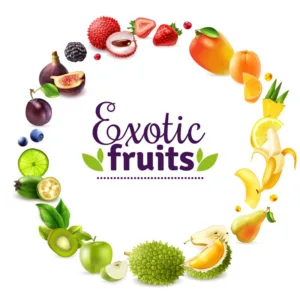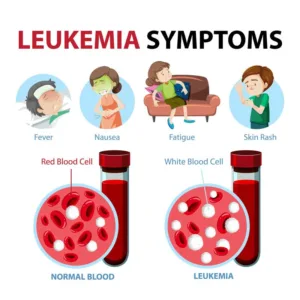In the ever-evolving digital landscape, emojis have transformed the way we communicate, transcending language barriers and adding a splash of emotion to our messages. Among the vast array of emojis available, the upside-down smiley face has emerged as a captivating symbol, intriguing users with its enigmatic expression and hidden intentions. As experts in the fields of digital communication and SEO, we embark on a journey to explore the fascinating world of the upside-down smiley face and the unique language it represents.

Understanding the Upside Down Smiley Face Emoji
At first glance, the upside-down smiley face, 🙃, appears to be a playful variation of the traditional smiley. With its smile turned upside down and raised eyebrows, it might seem like a simple expression of happiness or sadness. However, the true meaning of this emoji goes beyond the surface, as emojis are inherently subjective, allowing users to imbue them with their intended emotions.
Decoding the Upside Down Smiley Face Meaning
Perspective from a Girl:
For girls, the upside-down smiley face can convey diverse meanings depending on the context. It may serve as a playful way of teasing or being sarcastic, adding an element of lightheartedness to the conversation. When used in response to compliments or flattery, it can convey a hint of coyness and playfulness.
Perspective from a Guy:
When a guy uses the upside-down smiley face, it often showcases his playful side. It may also subtly express interest or initiate a flirtatious interaction. Deciphering the true intentions behind the emoji requires understanding the sender’s personality and the nature of the conversation.
Upside Down Smiley Face: Flirting or Friendly Gesture?
The debate over whether the upside-down smiley face is flirty or friendly sparks interest among emoji enthusiasts. Some believe it carries a flirtatious undertone, while others see it as a harmless, friendly wave. Its ambiguity adds mystery, allowing users to interpret it according to their unique perspectives.
Understanding the Upside Down Smiley Face Emoji
At first glance, the upside-down smiley face, 🙃, appears to be a playful twist on the traditional smiley. With its smile turned upside down and raised eyebrows, it may seem like a simple expression of happiness or sadness. However, its true meaning goes beyond surface-level interpretations.
The key to understanding the upside-down smiley face lies in its context and the nuances of the conversation. Emojis, like the upside-down smiley face, are inherently subjective, allowing users to imbue them with their intended emotions.
Decoding the Upside Down Smiley Face Meaning
Interpretation from a Girl’s Perspective
For girls, the upside-down smiley face can hold diverse meanings depending on the context. It may be a playful way of teasing or being sarcastic, adding an element of light-heartedness to the conversation. When used in response to compliments or flattery, it can convey a hint of coyness and playfulness.
What it Means When a Guy Sends You an Upside Down Smiley Face
When a guy uses the upside-down smiley face, it often represents an attempt to showcase his playful side. It may also serve as a subtle way of expressing interest or initiating a flirtatious interaction. Understanding the sender’s personality and the nature of the conversation is crucial in deciphering the true intentions behind the emoji.
Upside Down Smiley Face: Flirting or Friendly Gesture?
The debate surrounding the upside-down smiley face’s role in flirting is a subject of interest among emoji enthusiasts. Some believe that the emoji carries a flirtatious undertone, while others argue that it’s merely a friendly and lighthearted gesture. The ambiguity adds an air of mystery, leaving room for individual interpretation and making conversations all the more intriguing.
The Subtle Language of Emojis: Hidden Meanings
Emojis, including the upside-down smiley face, operate within a unique and subtle language. The combination of emojis can convey complex emotions, offering insights into the sender’s feelings and intentions. In the digital realm, where face-to-face cues are absent, emojis provide a powerful means of non-verbal communication.
Crafting User Experience with Emojis:
Emojis play a vital role in enhancing user experience by adding a visual element to text-based communication. When used mindfully, emojis create a sense of warmth, authenticity, and relatability, making the interaction more engaging and enjoyable.
Here’s how you can craft a memorable user experience with emojis:
- Choose Emojis That Resonate: Consider your target audience and the tone of your content. Select emojis that align with the emotions and sentiments you want to convey. A friendly conversation may benefit from a 😊 or 😄, while a more serious tone could include a 😅 or 😔.
- Enhance Clarity and Context: Emojis can provide context and clarity to your message, reducing the chances of misinterpretation. For instance, pairing a 🙏 with a “thank you” expresses gratitude more emphatically than just using words.
- Create Visual Signposts: Long-form content can be visually overwhelming. Emojis act as signposts, breaking up text and guiding readers through your article. A 🌟 or 🔍 can draw attention to important points or subheadings.
- Inject Emotion and Personality: Emojis add a human touch to your communication, allowing your brand’s personality to shine through. 😄 Use them to showcase your brand’s playfulness, empathy, or creativity.
- Encourage Interaction: Emojis encourage interaction and evoke emotional responses from readers. Include a call-to-action with an inviting 😃 or 📞 to inspire users to engage with your content.
- Stay Consistent: Maintain consistency in your emoji usage to establish a recognizable brand voice. Consistency creates a sense of familiarity and helps users associate specific emojis with your brand.
- Test and Analyze: Experiment with different emojis and monitor audience engagement. Analyze how specific emojis resonate with your audience and adjust your approach accordingly.
- Emoji Storytelling: Emojis can be used to tell a story visually, complementing the written narrative. Craft a compelling emoji sequence that enhances the message you want to convey.
By thoughtfully integrating emojis into your content, you create a more dynamic and engaging user experience. Remember, emojis are a versatile tool that, when used with intention, can elevate your brand’s communication and foster a stronger connection with your audience.
Exploring Other Contexts and Connotations
The upside-down smiley face’s versatility extends beyond romantic interactions. It finds its place in various contexts, such as casual conversations among friends and acquaintances. In professional settings, it can be used to add a touch of humor without detracting from the message’s intent.
Using Emojis Mindfully: Embracing the Three Pillars of SEO
As digital communication continues to evolve, understanding the implications of emojis is crucial for effective online interactions. Incorporating emojis mindfully can enhance user engagement and foster a positive user experience. As we delve into the world of emojis and their subtle language, we must remember the Three Pillars of SEO: Authority, Relevance, and Experience.
Authority: Establishing Credibility Through Emojis
Incorporating emojis thoughtfully can enhance the credibility and authority of the content. It demonstrates an understanding of modern communication trends, appealing to a wide range of audiences.
Relevance: Aligning Emojis with Context
Relevance is key when using emojis. Understanding the context of the conversation and the intended message ensures that emojis enhance rather than distract from the content’s purpose.
Experience: Engaging Users with Emojis
Emojis contribute to a positive user experience, providing visual cues that complement the text. Engaging users with emojis fosters a deeper connection and encourages continued interaction.
Upside Down Smiley Face Emoji: 🙃 and Other Emoji Codes
- Upside Down Smiley Face: 🙃
- Unicode: U+1F643
- HTML:
🙃or🙃
- Smiling Face with Smiling Eyes: 😊
- Unicode: U+1F60A
- HTML:
😊or😊
- Face with Tears of Joy: 😂
- Unicode: U+1F602
- HTML:
😂or😂
- Red Heart: ❤️
- Unicode: U+2764
- HTML:
❤or❤
- Thumbs Up: 👍
- Unicode: U+1F44D
- HTML:
👍or👍
- Sparkles: ✨
- Unicode: U+2728
- HTML:
✨or✨
- Fire: 🔥
- Unicode: U+1F525
- HTML:
🔥or🔥
- Smiling Face with Heart-Eyes: 😍
- Unicode: U+1F60D
- HTML:
😍or😍
- Thinking Face: 🤔
- Unicode: U+1F914
- HTML:
🤔or🤔
- Party Popper: 🎉
- Unicode: U+1F389
- HTML:
🎉or🎉
Please note that not all emojis have corresponding HTML entities, as HTML entities are based on Unicode characters. Additionally, some emojis may render differently depending on the device and platform being used. Emojis provide a fun and expressive way to communicate emotions and sentiments, adding a delightful touch to our digital conversations! 🎉😊
Conclusion
The upside-down smiley face is a captivating emoji that has revolutionized the way we communicate emotions in the digital realm. Its enigmatic expression and versatility make it a symbol of intrigue and curiosity. As we navigate the ever-changing landscape of digital communication, embracing emojis mindfully becomes a powerful tool in conveying emotions, building connections, and enhancing user experiences. Remember, the language of emojis is subjective and context-dependent, allowing each user to impart their unique interpretations and emotions into their digital conversations.
Frequently Asked Questions
What does the upside-down smiley face mean?
The upside-down smiley face can mean different things depending on the context. It is often used to convey a sense of playfulness or lightheartedness.
Is there a difference in meaning when a girl sends an upside-down smiley face?
Yes, when a girl sends an upside-down smiley face, it can be interpreted as flirtatious or teasing in nature.
Why do guys use the upside-down smiley face emoji?
Guys may use the upside-down smiley face to show a fun side of their personality or to flirt subtly.
Can the upside-down smiley face be misinterpreted?
As with any form of communication, emojis can be misinterpreted. The upside-down smiley face’s meaning depends on the conversation and the individuals involved.
Is the upside-down smiley face universally understood?
While many emojis have become widely recognized, interpretations can still vary among individuals and cultures.
Is the upside-down smiley face associated with flirting?
Yes, the upside-down smiley face can be used flirtatiously, but it can also serve as a friendly and lighthearted gesture. Its meaning varies based on the conversation and the sender’s personality.
How do I type an upside-down smiley face?
To type an upside-down smiley face, you can use special characters or symbols. One common way is by using the “Open Parentheses” symbol “(” followed by the “Colon” symbol “:” and finally closing with the “Close Parentheses” symbol “)” like this “(:”.
What emotion does the upside-down smiley face represent?
The Upside Down Smiley Face typically represents a sense of sarcasm, irony, or a playful expression of sadness. It is often used in a humorous context or to convey a feeling of not being entirely serious.
Where can I use the Upside Down Smiley Face?
The Upside Down Smiley Face can be used in various online platforms, including social media, messaging apps, forums, and emails. It adds a unique touch to your messages and helps express a specific tone or mood.
Can I create my own variation of the Upside Down Smiley Face?
Absolutely! Emoticons and symbols are versatile, and you can get creative in inventing your variations. Just remember to maintain the essential characteristics of the Upside Down Smiley Face to ensure it remains recognizable.
What are some other ways to express emotions in text?
Besides the Upside Down Smiley Face, there are numerous other emoticons and symbols you can use to express emotions in text. Some examples include the classic 🙂 for a regular smile, :'( for crying, and 😉 for a wink.
Can the meaning of the Upside Down Smiley Face change depending on its placement within a sentence?
Yes, the placement of the Upside Down Smiley Face can affect its interpretation. Placing it at the end of a sentence typically emphasizes the conveyed emotion, while using it mid-sentence may alter the reader’s perception of the intended meaning.
When should I use the Upside Down Smiley Face?
You can use the Upside Down Smiley Face when you want to add a touch of sarcasm, irony, or playfulness to your messages. However, be cautious about its usage in professional or formal settings, as it may not be appropriate in all contexts.
Are there other variations of the Upside Down Smiley Face?
Yes, there are several variations of the Upside Down Smiley Face, each with its own unique style. Some people use different punctuation marks or combine characters creatively to achieve a similar effect.
Can I use the Upside Down Smiley Face in business emails?
Using the Upside Down Smiley Face in business emails should be done with caution. While it may be acceptable in a casual or friendly exchange, it is best to avoid using it in formal or serious business communications. Consider the context and the recipients before including emoticons in professional emails.






